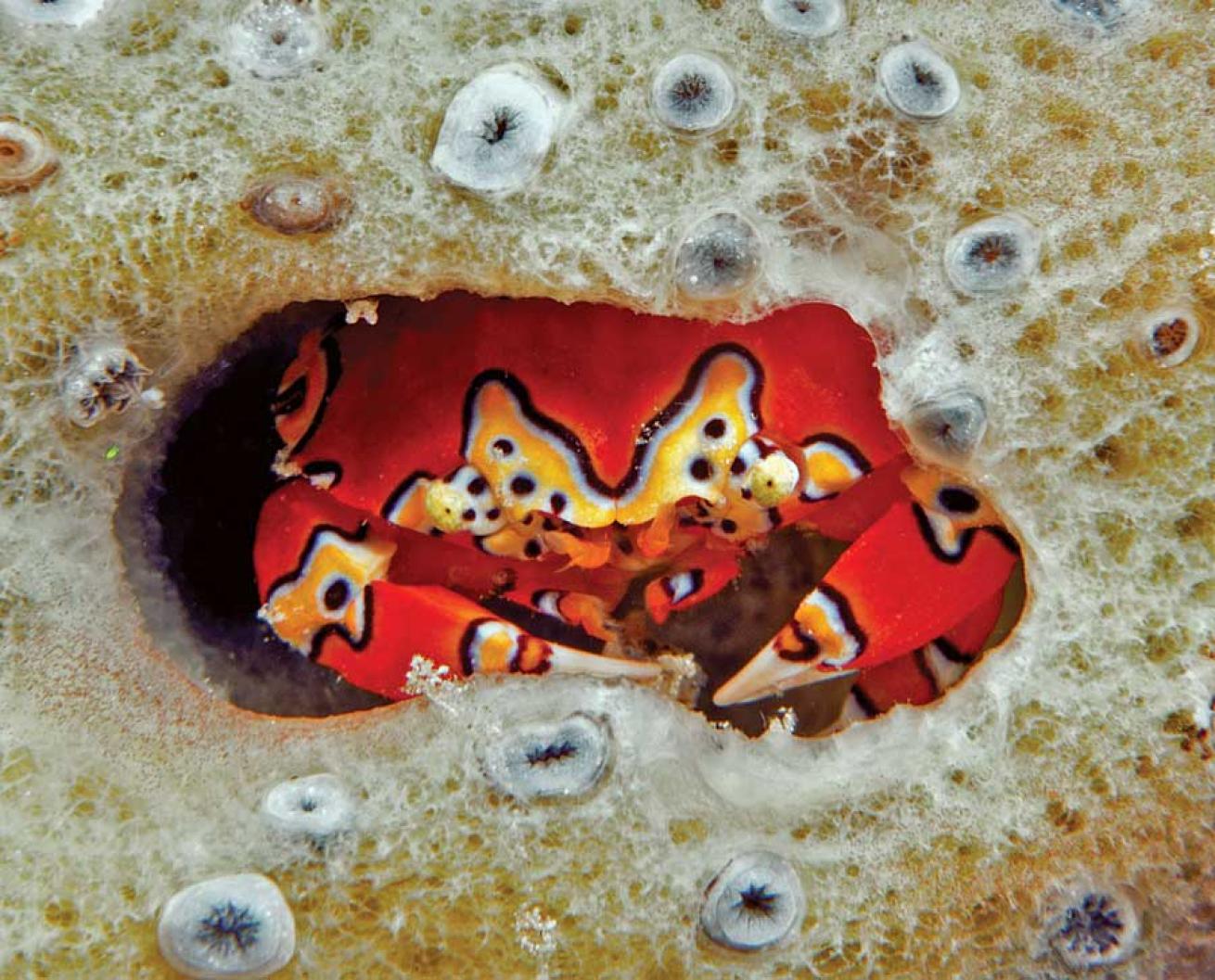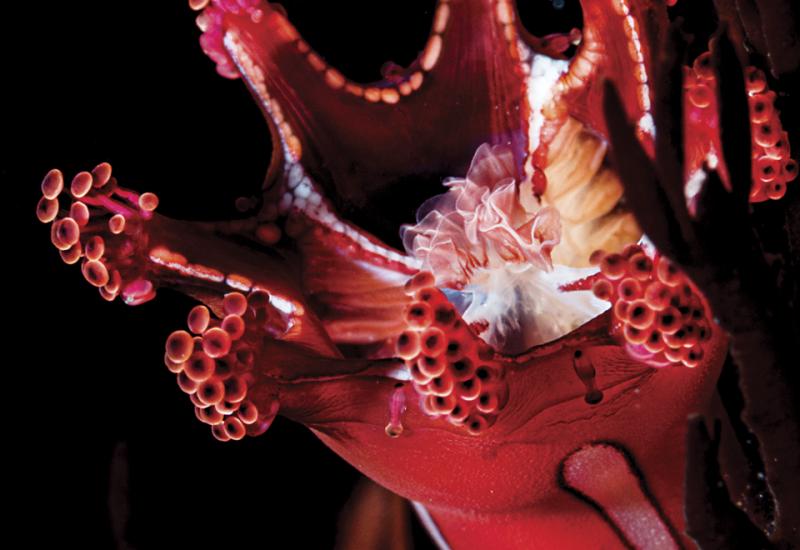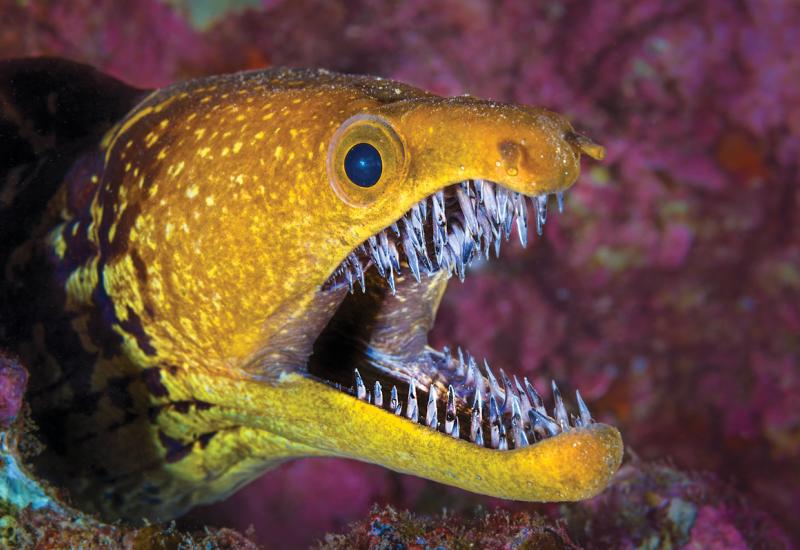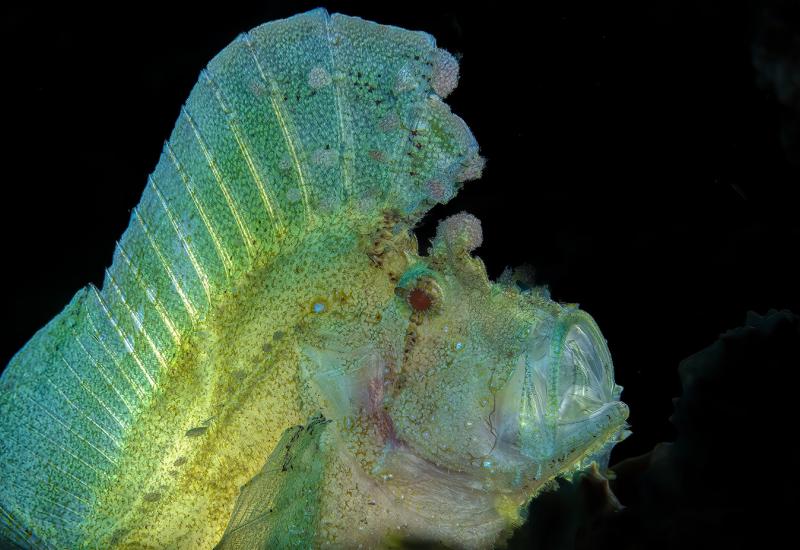Critter Hunt: Caribbean Hideaway

Even though they’re not much bigger than a button, gaudy clown crabs are one of the most highly prized crustaceans in the Caribbean. Their celebrity status stems from an eye-catching color scheme displaying all the exuberance of a Picasso painting. Making their splashy attire even more appealing, the patterns aren’t quite the same on any two crabs.
Unfortunately, the little crustaceans are not easy to find. During decades of searching, Anna and I have sighted fewer than a dozen, and always at night when they venture out into the open ocean to feed after predators have bedded down. So we were delighted when Adam Laverty, a dive guide in Utila — one of Honduras’ Bay Islands — told us how to locate gaudy clown crabs during the day.
With Laverty’s advice in mind, we set of on a hunt. Sure enough, his tips worked to a T. On our next two dives, we found four of the crabs exactly where he said they would be — hiding inside carapace-size cavities excavated in the sides of gray rope sponges. A second pointer: tiny flowerlike polyps of yellow zoanthids always surround the hideaways. Evidently, the crabs hollow out the sponge walls with their great claws to create a safe haven where they hunker down during the dangerous daylight hours. However, the reason for the nearby zoanthids had us baffled until a bit of research revealed that the clown crabs’ favorite food just happens to be zoanthids polyps.
****More Critter Hunt Videos:****
Bumblebee Shrimp | Jellyfish Gardening | Blenny Quest | A New Species of Fairy Wrasse

Ned and Anna DeLoachPicture-perfect clown crabs hunker down in daylight safety zones.
Even though they’re not much bigger than a button, gaudy clown crabs are one of the most highly prized crustaceans in the Caribbean. Their celebrity status stems from an eye-catching color scheme displaying all the exuberance of a Picasso painting. Making their splashy attire even more appealing, the patterns aren’t quite the same on any two crabs.
Unfortunately, the little crustaceans are not easy to find. During decades of searching, Anna and I have sighted fewer than a dozen, and always at night when they venture out into the open ocean to feed after predators have bedded down. So we were delighted when Adam Laverty, a dive guide in Utila — one of Honduras’ Bay Islands — told us how to locate gaudy clown crabs during the day.
With Laverty’s advice in mind, we set of on a hunt. Sure enough, his tips worked to a T. On our next two dives, we found four of the crabs exactly where he said they would be — hiding inside carapace-size cavities excavated in the sides of gray rope sponges. A second pointer: tiny flowerlike polyps of yellow zoanthids always surround the hideaways. Evidently, the crabs hollow out the sponge walls with their great claws to create a safe haven where they hunker down during the dangerous daylight hours. However, the reason for the nearby zoanthids had us baffled until a bit of research revealed that the clown crabs’ favorite food just happens to be zoanthids polyps.
****More Critter Hunt Videos:****
Bumblebee Shrimp | Jellyfish Gardening | Blenny Quest | A New Species of Fairy Wrasse










